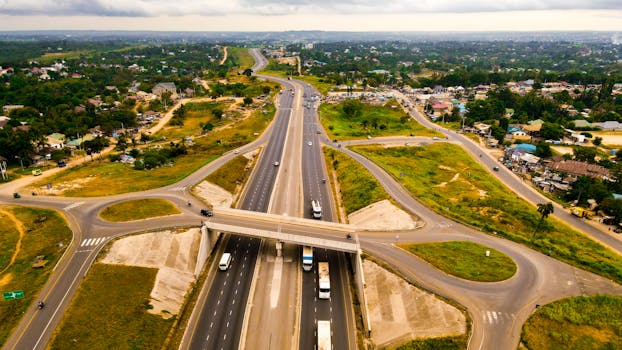Takeaways:
- The automotive industry is set for a revolutionary change with numerous new car models expected in 2025.
- Key trends include electric vehicles, advanced driver-assistance systems, and sustainable materials.
- Consumers can expect a mix of luxury, performance, and eco-friendly options in the upcoming car lineup.
- The integration of AI and connectivity features will redefine the driving experience.
The automotive landscape is evolving rapidly, and 2025 promises to be a landmark year for car enthusiasts and everyday drivers alike. With advancements in technology and a growing emphasis on sustainability, the new cars debuting in 2025 are set to revolutionize the way we think about driving. In this article, we will explore the exciting new models expected to hit the market, the innovative features they will offer, and the overall direction of the automotive industry.
As we look forward to 2025, one of the most significant trends is the shift towards electric vehicles (EVs). Major automotive manufacturers are committing to electrifying their fleets, with many announcing plans to phase out internal combustion engines over the next decade. In 2025, we can expect to see a wide range of electric models that cater to different segments of the market. From compact cars to SUVs and even luxury sedans, the options will be diverse.
One notable entry in the electric vehicle segment is the highly anticipated Tesla Model 2, which aims to be an affordable EV option for the masses. With a starting price projected at around $25,000, this vehicle is designed to attract first-time EV buyers. It will feature Tesla’s renowned Autopilot capabilities, a minimalist interior with a central touchscreen, and an impressive range of over 250 miles on a single charge.
Another exciting model is the Ford F-150 Lightning, an electric version of the best-selling pickup truck. With its powerful electric motors, the F-150 Lightning promises to deliver exceptional towing capacity and off-road capabilities while providing the benefits of electric driving.
Beyond just electric vehicles, 2025 will also see the introduction of hybrids and plug-in hybrids that combine gasoline engines with electric powertrains. These models are perfect for those who want to reduce their carbon footprint but are not ready to fully commit to electric driving.
In addition to electric powertrains, technological advancements in driver assistance systems will play a significant role in the new cars of 2025. Features such as adaptive cruise control, lane-keeping assist, and automated parking will become standard in many models. The focus will be on enhancing safety and providing a more enjoyable driving experience.
One standout model that showcases advanced driver assistance technology is the Mercedes-Benz EQS. This luxury electric sedan will feature an array of sensors and cameras that work together to offer Level 3 autonomous driving capabilities in certain conditions. This means that the vehicle can take over driving tasks, allowing the driver to focus on other activities, such as working or relaxing.
Moreover, connectivity will be a key aspect of the 2025 automotive landscape. Expect to see vehicles equipped with 5G technology, enabling faster data transfer and seamless integration with smart devices. This connectivity will enhance navigation, entertainment, and even vehicle maintenance by allowing real-time updates and diagnostics.
As consumers become more tech-savvy, automakers are responding by incorporating features such as voice recognition, personalized settings, and over-the-air software updates. The new Ford Mustang Mach-E, for example, will feature a state-of-the-art infotainment system that allows drivers to customize their driving experience and access a vast array of apps and services.
Another significant trend in the automotive industry heading into 2025 is the use of sustainable materials in car manufacturing. With increasing awareness of environmental issues, consumers are looking for cars that align with their values. Automakers are responding by incorporating recycled materials, plant-based plastics, and other eco-friendly components into their vehicles.
The BMW iX, for example, is made with recycled aluminum and sustainably sourced wood, showcasing the brand’s commitment to sustainability without sacrificing luxury. As more manufacturers adopt similar practices, the overall carbon footprint of vehicle production is expected to decrease.
Additionally, the trend of shared mobility will continue to grow, with many cities promoting car-sharing programs and electric ride-hailing services. This shift will change the way people view car ownership, leading to more efficient use of vehicles and reduced congestion in urban areas.
In 2025, we can expect to see automakers offering subscription services that allow consumers to pay a monthly fee to access a variety of vehicles, whether for personal use or shared rides. This model aligns with the growing desire for flexibility and convenience among modern consumers.
As we delve into the specifics of each anticipated model, it’s essential to consider the impact of these innovations on the consumer experience. The cars coming in 2025 are not just a reflection of technological advancements; they also represent a shift in consumer preferences towards sustainability, connectivity, and personalization.
Luxury brands are likely to lead the charge in offering high-tech features and premium materials. For example, the upcoming Audi Q8 e-tron is expected to feature a lavish interior with advanced infotainment systems, luxurious seating, and an emphasis on environmental sustainability.
On the other hand, mass-market brands will focus on affordability and practicality while still incorporating essential technology. The 2025 Honda Civic, for instance, is rumored to include hybrid options alongside traditional gasoline engines, appealing to a broader audience that seeks efficiency without compromising on performance.
Moreover, the design of vehicles will evolve to reflect the changing tastes of consumers. Expect to see sleeker profiles, bold colors, and innovative lighting designs that enhance both aesthetics and functionality.
As we approach the launch of these new models, it’s crucial for consumers to stay informed about their options. Understanding the features and benefits of each vehicle can help buyers make educated decisions that align with their lifestyles and values.
Finally, as we look toward the future of driving in 2025, it’s clear that the automotive industry is on the brink of significant change. With a focus on electric vehicles, advanced technologies, sustainable practices, and evolving consumer preferences, the cars of 2025 will offer a glimpse into the future of mobility.
From exciting new models that push the boundaries of innovation to eco-friendly practices that support a healthier planet, the developments in the automotive landscape promise to enhance the driving experience for everyone. As we countdown to 2025, car enthusiasts and everyday drivers alike should prepare for an exhilarating journey ahead.


